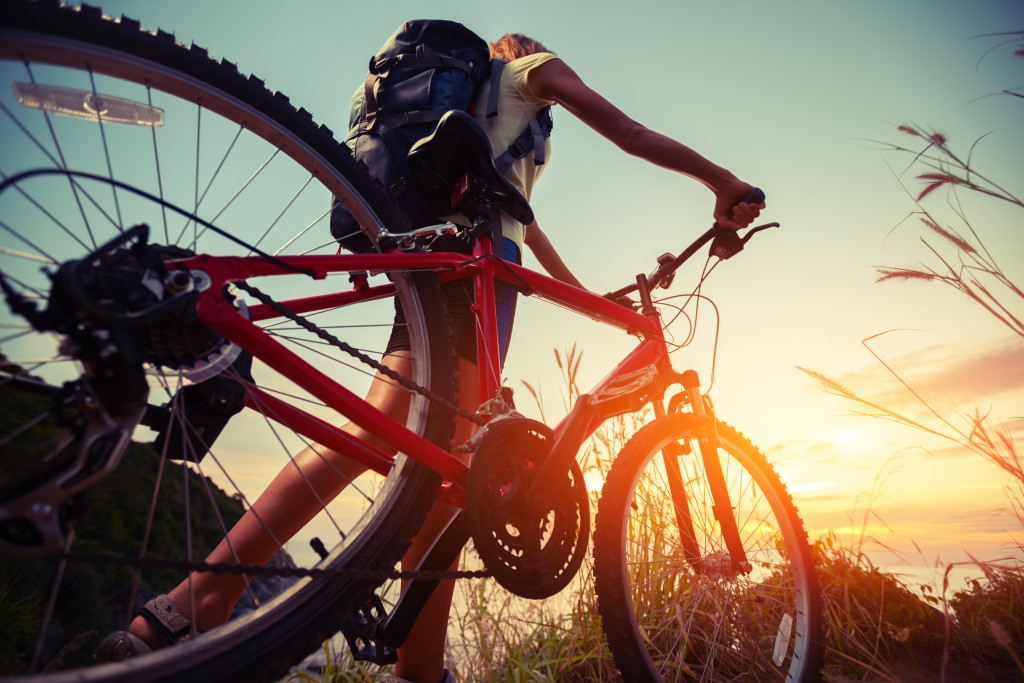Cycling is fun and relatively safer than other sports. But cycling accidents can be extreme and fatal, which may scare some bikers away from public roads. If you’d rather not risk your safety as well, creating a cycling track in your own backyard will be a great idea. You have two options: make a dirt track or a smooth, concrete track.
Both types of tracks can create a challenging cycling experience. The dirt track may pump your legs more, but the concrete path will allow you to increase speed. In the long run, though, which of the two will benefit you more?
Cycling on a Dirt Track
Dirt tracks, a.k.a. pump tracks, are great for building strength and improving fitness. However, it can pose some health risks if you’re not well-trained. Dirt tracks produce as much as 24% more resistance than a newly paved track, after all. It would spike up your heart rate fast, making your breathing labored.
If you’re not used to that kind of challenge, wear a heart rate monitor while cycling. It would help you know when to stop at rest, such as when your pulse rate gets close to the maximum rate for your age and weight. Try to make your track a little smoother as well; you can start off with a basic oval path. You can complete its loop without pedaling as much.
To create an oval dirt track, you need a number of tools. The most crucial ones are the shovel, rake, tamper, and pickax. You also need a garden hose to hold the track together with moisture. If you’d move a large amount of dirt, a skidsteer and a wheelbarrow will make the job easier. Still, you’d need help in creating your dirt track, whether it’s a basic oval one or a complex track with multiple turns.
Tutorials on YouTube can help you learn the step-by-step process. But before getting started, determine the soil type on your yard first. If it has clay soil, you may have a hard time packing it with water. That’s because when wet, clay soil becomes thick mud that would stick to your shoes. You may not get any work done because you’d be too busy trying to clean up.
The ideal type of soil for a dirt track is dry sandy soil. Dry soil is easier to dig and its moisture levels are easier to control. It would allow you to finish your dirt track faster, and with less mess.
When it comes to maintenance, though, a dirt track may give you a harder time. Heavy rain will alter it, and over time, the soil may erode and lose its roughness. In addition, because it’s bare soil, weeds or grass will grow on it. You’d have to pluck them out regularly for as long as you plan to keep the track.
After a year so, you may have to rebuild your dirt track. And every time, you’d need help, as it’s not simply a job for one person. If you’re up to the strenuous task of creating a dirt track and maintaining it meticulously, then this may be the path — pun not intended — for you.
Cycling on a Concrete Road

On concrete roads, your rides are smoother and you can focus on training your speed. To increase your speed, apply a seal coat, a.k.a. asphalt on the concrete. Better yet, use the asphalt on the main pavement as it’s more economical. A dollar spent on asphalt pavement goes 25% to 30% further than a dollar spent on concrete.
Hence, money-wise, creating a concrete or asphalt track is a better choice than a dirt track. The latter may use fewer resources, but the tools can be expensive. Not to mention, concrete is easier to maintain. It doesn’t have to be rebuilt over time unless it got cracked.
Safety-wise, concrete, especially when topped with asphalt, is better than a dirt track, too. If you’d love to cycle on highways but are afraid for your safety, creating an asphalt track in your backyard is one of the best alternatives. You can create a path with multiple twists and turns, and still, you’d be whole even if you fall off your bike.
However, when you get used to cycling on your backyard track, don’t assume that you’ve become ready to cycle on public roads. With cars and pedestrians sharing the road, it can feel like you’re a newbie again. So use your backyard track — dirt or concrete — with a realistic perspective. It’s smaller and you have more control over its environment, so it’s designed for your own safety. But out there, the same risks loom. Always prioritize your safety wherever you are cycling.
